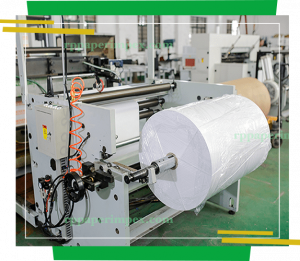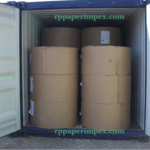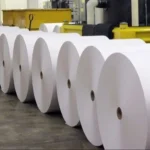Exploring the Chemistry Behind Paper Composition
Exploring the Chemistry Behind Paper Composition
Exploring the Chemistry Behind Paper Composition: In this modern era, where digital screens represent supreme, often the versatile use of paper goes unnoticed. Paper has a wide range of qualities that make it most eco-friendly and useful for a variety of applications. Papers are available in different ranges like uncoated paper, copy paper, coated paper, paper board, thermal paper, kraft paper, void filling paper, continuous paper stationery, etc and all provide different qualities.
To know about the variation, the paper industry, and engineering organizations implement standard paper test procedures that are necessary for the detection and representation of paper composition. Typically a paper-based product releases 90 to 99% fibers, which are the most crucial chemical impacting ends-use qualities The chemical and physical qualities of paper products are dominated by a strong chain of self-bonding cellulose fibers within the network structure. The inorganic fraction of the paper consists primarily of filling and loading materials. Discover the hidden world of paper chemistry with us, Exploring the Chemistry Behind Paper Composition.

Chemical Composition of Paper
Want to Explore the Chemistry Behind Paper Composition, Papers are very different according to their grade and type. More than half of paper grades are created from organic and inorganic materials. Primarily the chemical composition of the paper consists of fibers, along with other components such as lignin, hemicellulose, and various additives.
The chemistry behind making Paper involves breaking down wood on other suitable fibrous materials into a pulp, which is transformed into sheets and dries to make the final paper product. The specific Paper Composition depends on the raw material used for the manufacturing procedure and the intended use of the paper. Furthermore, the recycled paper releases a mix of fibers from several sources.
Chemical Properties of the Paper
Generally the automatic formula of paper (C6H1O5)n. Paper is created from usually organic compounds such as carbon, oxygen, and hydrogen. Apart from this to improve properties paper has non-organic compounds that may be kaolin clay (Al2Si2O5(OH)4), chalk (CaCO3), and Titanium oxide (TiO2).
| (C6H10O5)n | Cellulose |
| Molecular Weight/ Molar Mass | 162.1406 g/mol |
| Density | 1.5 g/cm³ |
| Appears | White powder |
| Melting Point | 260–270 °C |
What Does Paper Pulp Comer From
Paper pulp is derived from forestry products, cotton and other fibers, and recycled paper. Below we learn about what paper pulp comes from:
Forestry Products
Usually, paper pulp comes from forestry raw materials like trees. Here is the list of trees:
- Spruce
- Pine
- Fir
- Aspen
- Birch
- Larch
- Hemlock
- Eucalyptus
Cotton and Other Fibers
Fibers such as cotton are very strong, so fibers are sometimes used to create paper products. This is an attractive choice for documents because of its strength. It is combined with a unique feel that is a reason paper is the first choice for letterhead and other corporate stationery products.
Recycled Paper
Recycling paper is an eco-friendly option for manufacturing paper products. Many papers include different types of recycled paper:
- Pre Consumer Waste
- Post-consumer waste
- Sawdust
Chemical Ingredients of Paper
Exploring the Chemistry Behind Paper Composition, so first you learn about the Chemical Ingredients of Paper, here we explain the common chemical ingredients used in paper making procedure. The balance and treatment of these components dominate the properties of the final paper product:
- Cellulose: It comes from plant sources often wood but can also derived from fibrous materials such as recycled paper or cotton. Cellulose is known as the major structural component of paper and a complicated carbohydrate that is created by repeating glucose units. It gave complete strength and rigidity to the paper.
- Lignin: It is a complicated polymer that gives hardness to plant cell walls. In paper making process, often ligin is considered disagreeable because it can lead to deterioration and yellowing of paper over time. Usually, superior-quality papers undergo processes to remove or reduce lignin.
- Hemicellulose: It is another kind of Chemistry Behind Paper Composition, Hemicellulose is found in plant cell walls, including those of wood. It has a branched structure and contributes to the overall flexibility and strength of the paper.
- Sizing Agents: Commonly sizing agents include alum and rosin. The substance can be used internally and externally to control the paper’s interaction with inks and improve the resistance to water penetration.
- Dyes and Pigments: If you require colored paper, pigments or dyes can be added during the paper manufacturing process. Apart from this, The print designer must be careful of the negative impact colored sheets have on colored inks and graphics.
Chemical Method Used in Paper Making
In Chemical Pulping Process various chemical reagents are used and heat to soften the lignin. As a result, it dissolved and then mechanically refined to separate the fibers. Round about 3000 or so different types of chemicals “can be used” in papermaking, in practice only about 200 individual chemicals are typically used, each satisfying a specific need.
Kraft Pupling Process
In the procedure of kraft pulping, the wood chips are cooked in an alkaline chemical solution of sodium hydroxide (NaOH) and sodium sulfide (Na2S). The kraft pulping process is undergone high temperature and pressure.
- Breaks down the lignin into soluble compounds.
- Helps to prevent the re-deposition of lignin onto the cellulose fibers.
- Strong and high-yield pulp, making it the most widely used chemical pulping method.
Sulfite Pulping
In the process cycle of sulfite pulping, the wood chips are warmed in an acidic solution, generally consisting of sulfurous acid (H2SO3) and a base.
- Break down lignin through sulfonation reactions.
- Neutralize the acidic environment.
- Suitable for producing high-quality paper.
- Commonly used than kraft pulping due to higher production costs and environmental considerations.




